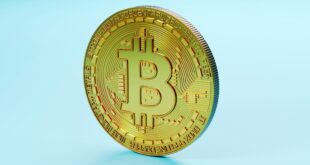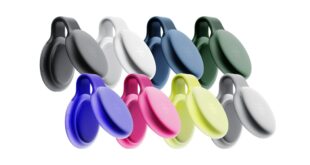Adaptations like a mother’s ability to provide milk to her offspring were catalysts for human evolution

Cat Bohannon's new book argues that the demands of women's bodies may have driven human evolution to a far greater degree than has been previously recognized. The point of evolution, after all, is to carry genes into the future. And while men do supply the sperm, it's the women who carry the babies, birth them and in many cases, feed the helpless infants from their own bodies.
Seattle-based writer and researcher Bohannon decided to write a book about evolution through the lens of the female body. The book is called Eve: How the Female Body Drove 200 Million Years of Human Evolution
Bob McDonald spoke with Cat Bohannon.
This interview has been edited for length and clarity.
You structure your book around the evolution of certain capacities, and humans take a while to enter this story. Your first character is an animal named Morgie. Tell me about her.
She's kind of like a weasel rat. She lived about 200 to 205 million years ago and she is why we have milk. Actually, this is sort of thought of as the dawn of when we start lactating, which is one of the most important divergent points where we really started to become what we now call mammals.
Why is milk so crucial?
Milk is crucial primarily because it controls where a newborn offspring is getting its water because milk is mostly water, and water is a hotbed of pathogens when you get it from your local stream or fetid pool.
The most curious thing is that milk is lastly food, so first the baby is thirsty and maybe also hungry. But what milk is doing, especially in early development, is shaping the microbiome of that baby's intestines not only to make it ready to digest something like milk, but also because all of that microbiome down the digestive tract is strongly training the immune system in those critical early phases of life.
So for example, there are huge portions of milk sugars that we don't digest at all. It's literally only for the bacteria that we are cultivating in a weird garden in our guts, right? What that helps do is select for friendlier profiles, let's say, of our gut bugs — things that might be more helpful to the baby rather than harmful. There are complex ways that happens, but for the most part, milk is what kicks that journey off.

As you point out in your book, milk preceded the breast and the nipple, but the nipple itself is interesting as an example of the female body driving evolution and, well, men just coming along for the ride, as it were.
Right. So my father's nipples, I haven't seen them very often, but I know he has them. Now, my father's nipples, I don't think of as exactly vestigial necessarily. There are actually some human communities that let babies sort of suckle, mostly as a pacifier, on a male chest.
But the interesting thing about the male nipple is that basically, we [women] are hardwired to make milk, right? Essentially, the hormone protocol that trans women will take in order to potentially lactate if she has adopted a baby or has gone through IVF with a surrogate and wants to provide milk to the child is the same.
It's the same fistful of pills, essentially, that a cis woman will take because lots of women adopt babies, but then think maybe breastfeeding is a thing that could be healthy for my newborn, who wouldn't have it otherwise. Maybe I could try. And it's the exact same fistful of pills.
In other words, the human chest wall, no matter if it has these fatty bits, no matter which kind of puberty it goes through, is so hardwired to respond to certain hormonal signals that it's just like, 'oh crap, a baby's incoming,' you know, 'send down the milk.' We better start building some mammary tissue and it works!
Now the next big adaptation that you write about is the womb and its connection to the dinosaurs. Tell me about that.
Well, the big connection that the modern placental womb uterus has to the dinosaurs is that they mostly went extinct except some disgruntled birds. And it also knocked out a huge number of the ancestors of marsupials.
Mammals and marsupials were actually head-to-head for a marsupial or placental plan, and for whatever reason, the marsupials died out more. This is why they're mostly now in South America and Australia, except for the possum in your yards.

But it's also true that for the placenta, what really, really changed in the female line, is that now we are effectively hatching our eggs inside of our own bodies. So that meant that we had to build a uterus, a womb, that could kind of turn the mother's body into some combination of burrow or nest and eggshell for like this huge amount of time, right?
That has knock-on effects in female immune systems, obviously. It has knock-on effects in our metabolism, in our cardiovascular system — which may be part of why so many human men have known problems with their cardiovascular system — ours are slightly more dynamic. We have more flexible peripheral vasculature and it might be tied indeed to how these wombs evolved.

Let's skip ahead a few tens of millions of years. It was a big evolutionary step when our ancestors rose up on two legs, so how do we understand bipedalism from a female body perspective?
Yeah, so a lot of times it's been this very, very stereotypical male story like, 'The guys needed to go hunting to get the meat to bring it home to the females with these vulnerable babies. The likelier case, or at least what I thought likelier talking to some primatologists, is what you can see with nonhuman primates — your chimps and bonobos — they're walking on two legs in many cases to carry rare food away from other guys that might steal it.
And the thing that we forget about male versus female, is that in almost every other primate species, but certainly the apes, the females are the primary caretakers of their offspring for years and years and years. And that means they're the ones responsible for making sure the kid gets enough food.

In many ways, even though we're super social primates, the model of the history of the female line in apes is basically single moms just going out and working really, really hard to try and source food for the kids. So if you need to go and get food and the kid's with you, it seems likely that you would need to move a little further away from the group.
And what it really takes to walk upright is to have a body that's geared towards endurance.
And you point out that women have extraordinary endurance.
Yeah, actually, that's one of the big sexual differentiations. The big sex difference between male and female musculoskeletal systems isn't just that extra muscle mass that typical adult men have. It's also how much slow twitch versus fast twitch fibers we have in our skeletal muscles. It also has to do with what those cells are doing to use different substrates. What kind of energy are they using? When do they kick into a second wind? And just by almost every measure, a typical female body, even if it's not trained that way, just sort of innately seems to be more good for endurance.
*****
Credit belongs to : www.cbc.ca
 MaharlikaNews | Canada Leading Online Filipino Newspaper Portal The No. 1 most engaged information website for Filipino – Canadian in Canada. MaharlikaNews.com received almost a quarter a million visitors in 2020.
MaharlikaNews | Canada Leading Online Filipino Newspaper Portal The No. 1 most engaged information website for Filipino – Canadian in Canada. MaharlikaNews.com received almost a quarter a million visitors in 2020.







